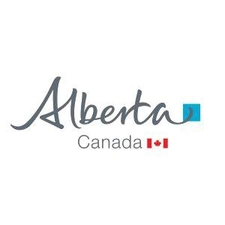SURFICIAL-GEOLOGY
Type of resources
Topics
Keywords
Contact for the resource
Provided by
Formats
Representation types
Update frequencies
status
-

This data set is a GIS version of the surficial geology linear features for the Waterways area Alberta (NTS74D), as mapped at 1:250,000 scale by L.A.Bayrock.
-

This GIS dataset is a GIS version of Alberta Geological Survey Map 139, polygon features, as mapped at 1:250,000 scale. Digitizing was originally done by Prairie Farm Rehabilitation Administration (PFRA). The data were supplied to Alberta Geological Survey (AGS) by PFRA in Arc/Info coverage format (map polygon features only). Data were subsequently checked and edited by AGS.
-

This dataset is a GIS version of Alberta Geological Survey Map 139, point features, as mapped at 1:250,000 scale.
-

This GIS dataset is a GIS version of AGS Map 178, polygon features, as mapped at 1:250,000-scale by Fenton and Andriashek. Digitizing was originally done by Prairie Farm Rehabilitation Administration (PFRA). The data were supplied to AGS by PFRA in Arc/Info coverage format (map polygon features only). Data were subsequently checked and edited by AGS.
-

This dataset was digitized from an unedited version of surficial geology map of the Wapiti area, NTS 83L, compiled by Laurence Andriashek in 1983 (Alberta Geological Survey Open File Report 1983-23). Mapping scale is 1:250,000.
-

This dataset is a GIS version of the surficial geology point features for the Fort Chipewyan area, Alberta (NTS 74L) , as mapped at 1:250,000 scale by L.A. Bayrock (Alberta Geological Survey Map 141).
-

This data set is a GIS version of the surficial geology areal features for the Waterways area Alberta (NTS74D), as mapped at 1:250,000 scale by L.A.Bayrock.
-

This data set is a GIS version of the surficial geology lithologic contacts for the Bitumount area Alberta (NTS74E), as mapped at 1:250,000 scale by L.A.Bayrock.
-

This dataset is a GIS version of the linear surficial geology features in Alberta Geological Survey Map 146.
-

This data set is a GIS version of the surficial geology drumlin features for the Bitumount area Alberta (NTS74E), as mapped at 1:250,000 scale by L.A.Bayrock. Polygons represent the areal coverage of the drumlins, and no attributes are available.
 Arctic SDI catalogue
Arctic SDI catalogue